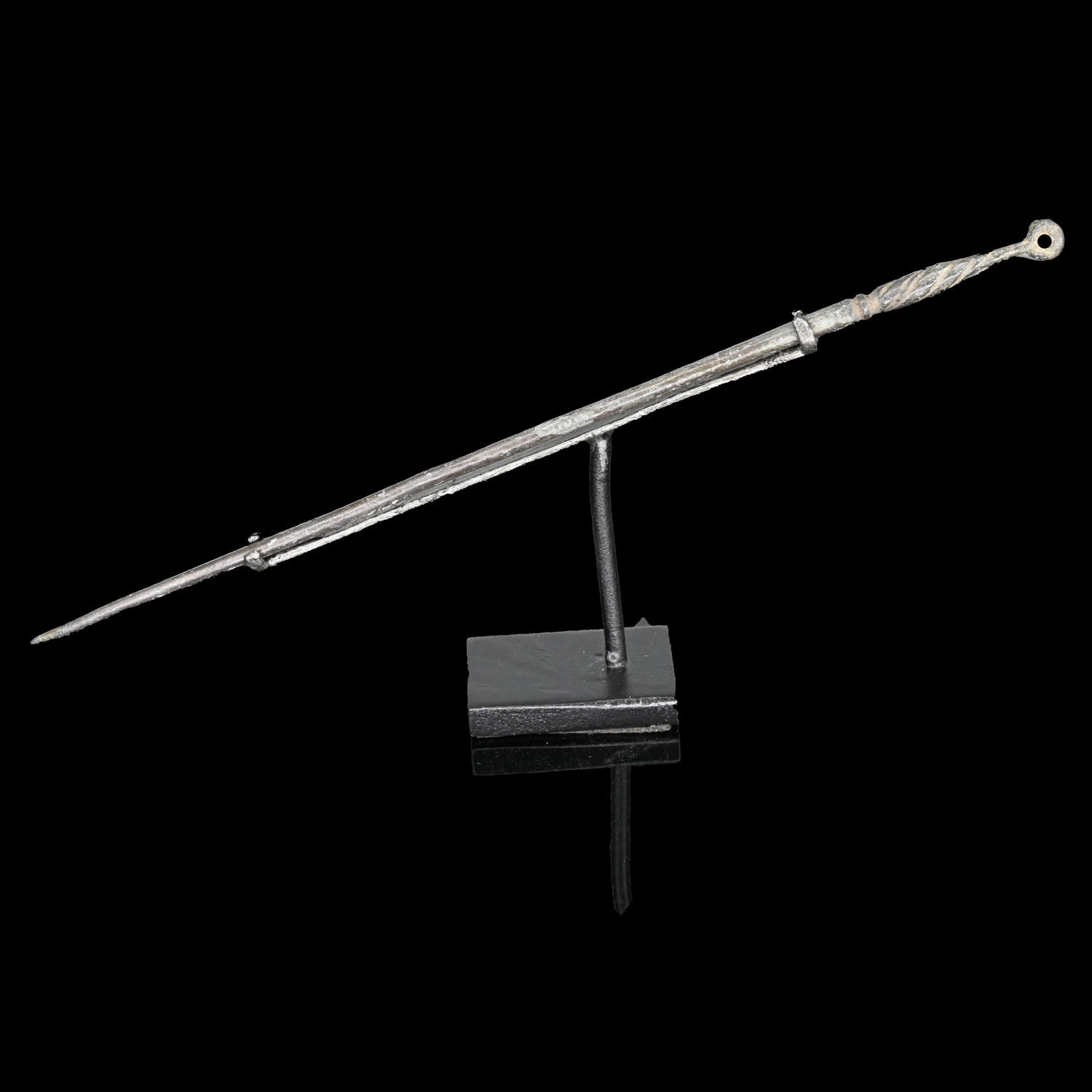


A rare Roman Silver Needle, Roman Imperial Period, ca. 1st - 2nd century CE
This object qualifies for free USA shipping and a flat rate fee of $60 if shipping internationally.
A rare silver needle, the rounded shaft tapering to a sharp point, a twisted handle with molded ring at the end. Eyeless needles were used for piercing and cauterizing and consequently, in addition to the cautery and cataract needle, would have been useful to the oculist in the treatment of opthalmic conditions.
Early Roman medicine was heavily based on religious and holistic practices, including prayers, chants, herbs, and charms. It wasn't until the late third century BC that Greek surgical practices and Greek doctors were brought to Rome. The military saw the first changes in medical practice, with the addition of permanent doctors, the establishment of military hospitals, and the widespread adoption of surgery.
Medium: Silver
Dimensions: Length: 5 3/8 inches (13.65 cm)
Condition: Intact and in very good condition overall, presented on a museum-quality custom mount.
Provenance: Private NYC collection, acquired from the NYC trade.
QUESTIONS? Just click the Contact Us tab on your right.
We ship Tuesday to Friday with FedEx and usually same day if your order is received before 2pm. Within the continental USA, packing, shipping and insurance is free. Depending on size and destination, delivery times range from one to five business days.
For overseas shipments we charge a small flat rate which includes packing, preparation of all customs paperwork, insurance and carrier fees in compliance with all USA and International customs requirements.
Overseas shipments are sent using FedEx International priority but contact us if you have a shipping preference. International customers are responsible for all duties and taxes.
Sands of Time provides a lifetime, unconditional guarantee of authenticity and provenance. Every object you purchase from us is accompanied by a Certificate of Authenticity, stating culture, provenance, and age.
Furthermore, we conduct due diligence to ensure the item, to the best of our knowledge, has not been illegally obtained from an excavation, architectural monument, public institution, or private property. Wherever possible, reference is made to existing collections or publications.Wherever possible, reference is made to existing collections or publications.
Choose options








